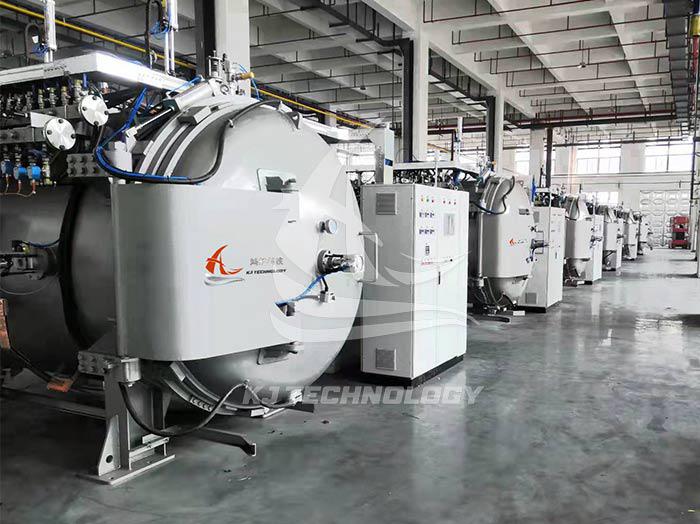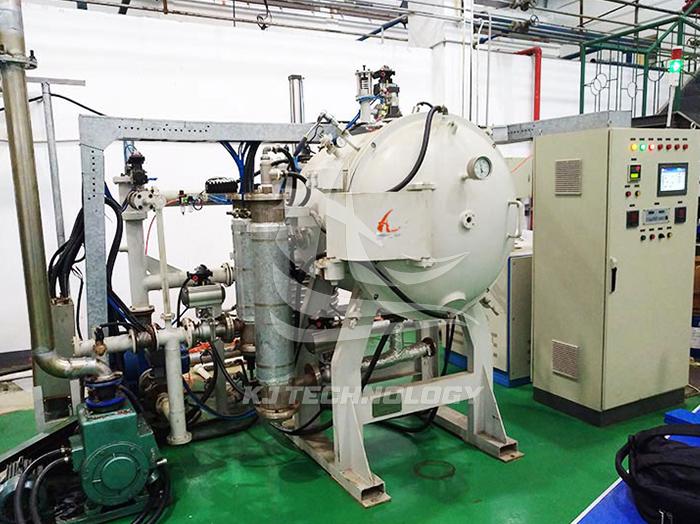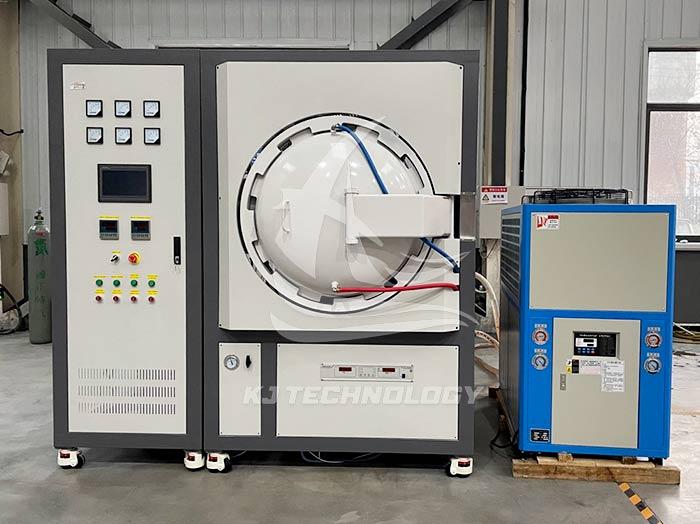What are the advantages of vacuum powder sintering furnace?
 09-09-2025 Author: KJ technology
09-09-2025 Author: KJ technology
The vacuum powder sintering furnace exhibits significant advantages in material preparation through the synergistic effect of vacuum environment and high-temperature heating, and is widely used in fields such as metals, ceramics, and composite materials. The following is a detailed analysis of its core advantages:
1. Material performance optimization
High density and low porosity
Vacuum degassing: In a vacuum environment, the adsorbed gases (such as water vapor and carbon dioxide) and volatile impurities (such as lubricants and binders) between powder particles are completely expelled, reducing the internal pores of the material and significantly improving its density.
Application example: Hard alloys (such as tungsten cobalt alloys) have improved bending strength and significantly enhanced wear resistance after vacuum sintering.
Inhibit oxidation and pollution
Anaerobic environment: Vacuum or inert gas protection (such as argon) can prevent metal powders (such as copper and titanium) from oxidizing at high temperatures, avoiding the formation of oxide films or impurity phases, and ensuring material purity.
Comparative advantage: Compared with traditional air sintering, the surface smoothness of metal parts produced by vacuum sintering is higher, and there is no need for subsequent acid washing or polishing treatment.
Accurate control of composition and organization
Liquid phase sintering promotion: Under vacuum conditions, low melting point components (such as nickel and cobalt) melt and uniformly fill the pores, accelerating particle rearrangement through capillary action and forming a uniform microstructure.
Grain refinement: The vacuum environment suppresses abnormal grain growth at high temperatures, avoiding material embrittlement. For example, after vacuum sintering, the grain size of ceramic materials can be controlled at the sub micron level, resulting in an increase in strength.
2. Wide process adaptability
Compatible with multiple material systems
Metal powder: suitable for stainless steel, high-temperature alloys, magnetic materials (such as neodymium iron boron), etc. By adjusting the sintering temperature and atmosphere, high-performance components can be prepared.
Ceramic materials: Ceramics such as alumina and silicon nitride are sintered under vacuum to avoid cracking and deformation, resulting in high-strength and high hardness products.
Composite materials: By staged sintering (such as vacuum degreasing followed by pressure sintering), metal ceramic, carbon carbon composite materials can be prepared to meet the needs of aerospace, nuclear energy and other fields.
Support complex shape forming
Near net forming technology: Combined with powder injection molding (MIM) or 3D printing technology, vacuum sintering furnaces can directly sinter complex geometric parts, reducing subsequent processing volume and lowering costs.
Case: Medical implants (such as artificial joints) achieve dense bonding between biocompatible coatings and substrates through vacuum sintering, improving their service life.
3. Energy saving and environmental advantages
Efficient insulation design
Multi layer insulation screen: Made of high-temperature resistant materials such as molybdenum and graphite, the insulation layer reduces heat radiation loss and reduces energy consumption compared to traditional sintering furnaces.
Fast temperature rise and fall: Some models are equipped with high-frequency induction heating or microwave heating technology, which increases the heating rate and shortens the production cycle.
Low emissions and pollution-free
Closed system: The vacuum environment prevents the leakage of harmful gases (such as fluoride and sulfide) and meets environmental protection requirements.
Exhaust gas treatment: The supporting exhaust gas treatment device can recover volatile organic compounds (VOCs) and achieve clean production.
4. Equipment reliability and lifespan
Corrosion resistance and long lifespan
Furnace material: The inner liner is made of high-purity alumina ceramic or graphite, and the outer layer is made of stainless steel, which can resist high temperature oxidation and acid-base corrosion, and has a longer service life.
Vacuum system: using dry mechanical pumps or molecular pumps, no oil pollution, and extended maintenance cycle.
intelligent control
PLC+touch screen: realizes precise control of temperature, pressure, and atmosphere, supports multi-stage process curve programming, and is easy to operate.
Remote monitoring: Real time monitoring of device status through IoT technology, early warning of faults, and reducing downtime.
5. Economy and cost-effectiveness
Reduce scrap rate
Uniform heating: The vacuum environment eliminates convective interference, with temperature field uniformity within ± 5 ℃, reducing cracking or deformation caused by temperature gradients and lowering the scrap rate.
Scale production advantage
Large capacity design: Some furnace types can accommodate several tons of powder materials, suitable for mass production, and significantly reduce unit costs.
Modular structure: The furnace body, heating system, and vacuum system can be independently replaced, with high maintenance efficiency and minimal downtime losses.








